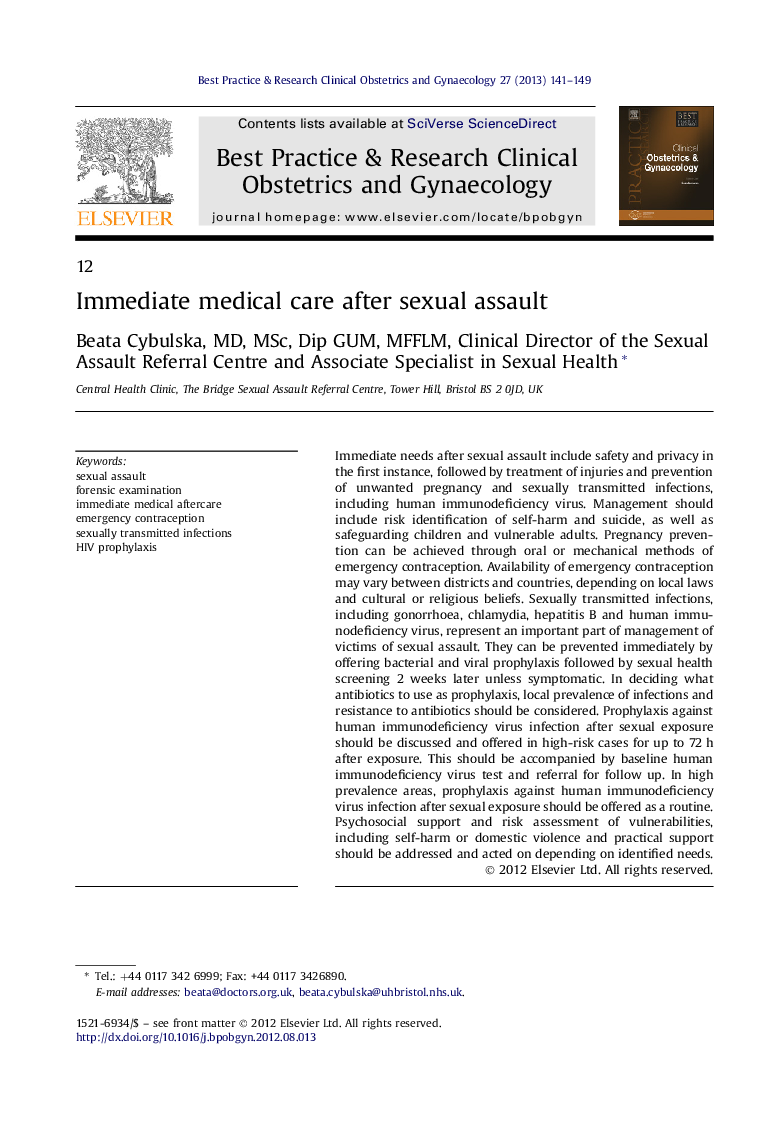| Article ID | Journal | Published Year | Pages | File Type |
|---|---|---|---|---|
| 3907723 | Best Practice & Research Clinical Obstetrics & Gynaecology | 2013 | 9 Pages |
Immediate needs after sexual assault include safety and privacy in the first instance, followed by treatment of injuries and prevention of unwanted pregnancy and sexually transmitted infections, including human immunodeficiency virus. Management should include risk identification of self-harm and suicide, as well as safeguarding children and vulnerable adults. Pregnancy prevention can be achieved through oral or mechanical methods of emergency contraception. Availability of emergency contraception may vary between districts and countries, depending on local laws and cultural or religious beliefs. Sexually transmitted infections, including gonorrhoea, chlamydia, hepatitis B and human immunodeficiency virus, represent an important part of management of victims of sexual assault. They can be prevented immediately by offering bacterial and viral prophylaxis followed by sexual health screening 2 weeks later unless symptomatic. In deciding what antibiotics to use as prophylaxis, local prevalence of infections and resistance to antibiotics should be considered. Prophylaxis against human immunodeficiency virus infection after sexual exposure should be discussed and offered in high-risk cases for up to 72 h after exposure. This should be accompanied by baseline human immunodeficiency virus test and referral for follow up. In high prevalence areas, prophylaxis against human immunodeficiency virus infection after sexual exposure should be offered as a routine. Psychosocial support and risk assessment of vulnerabilities, including self-harm or domestic violence and practical support should be addressed and acted on depending on identified needs.
